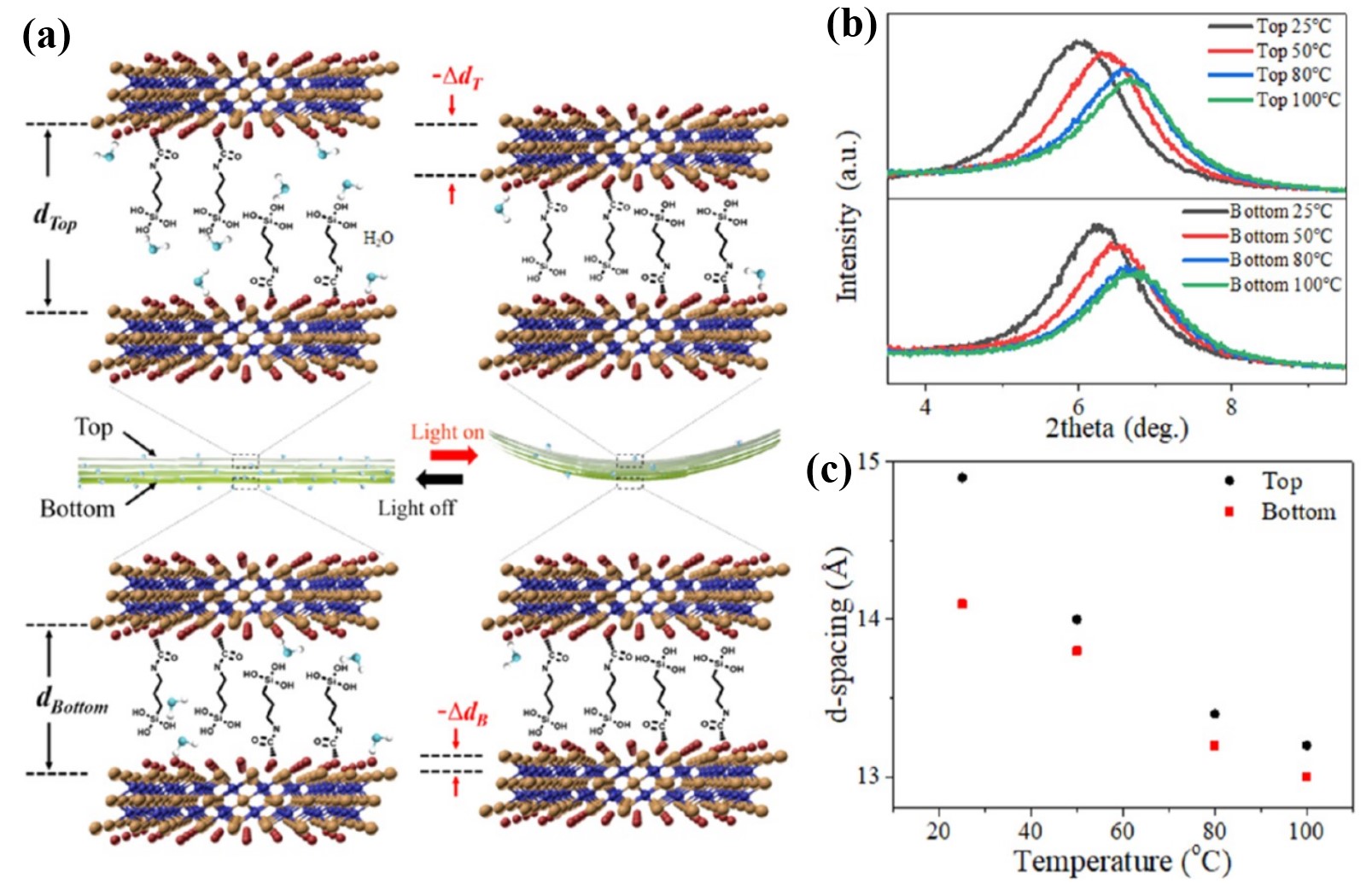Thanks to the various energy in nature, young sunflowers can track the sun’s movement because of the asymmetric elongation on opposite sides of stems from the solar irradiation; Drosophila melanogaster can sense and fly toward a light source to produce phototactic motion. These plants and insects have evolved the capability of responding to the change of environmental stimuli and producing corresponding mechanical motions.
Scientists have been endeavoring to make soft untethered microrobots that can move without artificial energy supply and control.
Recently, researchers from Hefei University of Technology, Shanghai Institute of Ceramics, and Nanjing Tech University et al. designed a Soft Actuator Based on Asymmetric Microstructural MXene.
With the help of variable temperature X-ray diffractometer (XRD) of China's Steady High Magnetic Field Facility (SHMFF), The High Magnetic Field Laboratory, Hefei Institutes of Physical Science (HFIPS), they unveiled and clarify the mechanism of this sun-light driven soft actuator.
This Actuator, basing on Asymmetric Microstructural MXene, exhibited light-driven deformation with a macroscopic and fast response to the natural sunlight.
At first, they studied the microstructure of the film, a core of the actuator, under XRD of SHMFF. The results showed that the (002) diffraction peaks from the top and bottom are, respectively, located at 5.9° and 6.3°. Both surfaces showed good hydrophilicity, and smaller water contact angle on the top surface.
Then via variable temperature XRD measurement, they proved the change of d-spacing at the top is greater than that at the bottom. When the temperature increased from 25 to 100°C, the d-spacing at the top decreased from 14.9 to 13.2 angstrom, while that at the bottom decreases from 14.1 to 13.0 angstrom, indicating that the bending deformation was induced by the asymmetric d-spacing change between the top and bottom.
This revealed that the top of the I-MXene film with larger d-spacing and better hydrophilicity could absorb more water molecules, leading to the larger swelling compared with that of the bottom. With the increase of the relative humidity, the I-MXene film bended toward its bottom surface, which was opposite to the direction of light-driven deformation.
SHMFF is a wide range of user facilities and services for multi-disciplinary and cross-disciplinary researches under steady high magnetic fields, that span condensed matter, electron strong correlation, topological insulator, nano-material fabrication, chemical reaction, neurosciences, biochemistry, pharmacology, biomedical sciences and more. It's open to all qualified domestic and international users, offering scientific researchers access to unique equipments housed in state-of-the-art facilities, and onsite experts to help visiting researchers take advantage of and make best use of the capabilities.
Link to the paper: Self-Locomotive Soft Actuator Based on Asymmetric Microstructural Ti3C2Tx MXene Film Driven by Natural Sunlight Fluctuation

Figure 1: (a) Schematic diagram showing the mechanism of the light-driven deformation for the I-MXene film. (b) XRD patterns from the top and bottom of the I-MXene film under different temperatures. (c) Interlayer d-spacing of the top and bottom of the I-MXene film as a function of the temperature.
Contact:
ZHAO Weiwei
Hefei Institutes of Physical Science (http://english.hf.cas.cn/)
Email: annyzhao@ipp.ac.cn
 Tel: +86-551-65591206
Tel: +86-551-65591206
 Fax: +86-551-65591270
Fax: +86-551-65591270
 Emai: zhous@hfcas.ac.cn
Emai: zhous@hfcas.ac.cn
 350 Shushanhu Road
350 Shushanhu Road